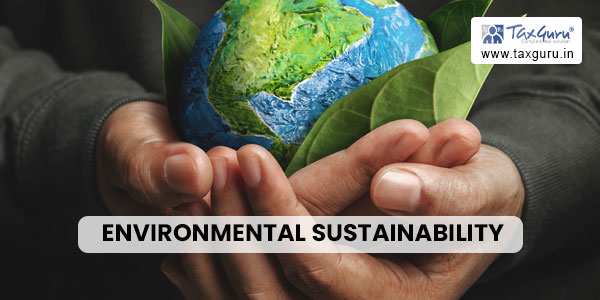Introduction
SAS 500 is the fifth of the 16 SAS, which will become effective once posted by ICAI SRO i.e ISAI. The prime objective is to drastically cut down waste generation through prevention, reduction, recycling, and reuse, while also ensuring the preservation of mountains, wild life and revitalization of degraded land.
United Nations Organization through its climate conference have time and again pointed out the growing hardships the human civilization will face if climate change is not looked into.
Process of Social Audit
The SAS provides perspicuous insight on whom the SA should approach in the process of data collection for its impact assessment assignment which shall include but not limited to:
Data Collection
- Direct beneficiaries e.g., people living in polluted/ affected areas, forest officials etc.
- Sustainability trainers / Teachers in schools / Trainers imparting on-the-job awareness training.
- Monitoring Agency.
- Testing Agencies.
- Key Program officials of the reporting entity.
- Academicians, researchers, public interest organizations who work in the area of environment and climate change.
When conducting surveys and collecting sample data, the following factors should be considered to assess relevance and reliability:
- designed by an in-house team or external specialized agency
- conducted by an in-house team or external specialized agency
- coverage: number of municipalities / districts / total distance (km)/ covered
After data collection, the SA should thoroughly review the data, which can include conducting physical inspections and one-on-one interviews to better understand the situation.

The social audit process under this SAS involves the SA asking key questions of themselves and the people involved. These questions form the foundation of the Social Impact Assessment Report. These questions could include:
- Did the target people get aware about sustainable development?
- Do they think differently after the training?
- Did they learn something they did not know?
- Did they use/apply the knowledge and gain from it?
- Did they share it with others?
- Did the target areas benefit from sustainable development initiatives?
- Did the air/land/water (surface and ground water)/marine/nutrient pollution reduce?
- Did the waste collection/recycling bear results as intended?
- Have activities like timber extraction, water extraction from shallow aquifers stopped?
Each aspect must be considered when addressing the additional questions related to it.
- Ensuring environmental sustainability:
- Did the quality of degraded soil/land improve?
- Did the initiatives result in sustainable use of resources?
- To what extent has sustainable livelihood been adopted by the target population?
- Have unsustainable activities in protected areas stopped?
- To what extent the target of land degradation-neutral world was achieved?
- What were the challenges or constraints faced in sustainable development initiatives and what corrective measures are planned for future?
- Addressing climate change:
- Could deforestation/desertification be halted?
- Did the afforestation/reforestation initiatives bear good results?
- Did the mitigation initiatives bear positive results?
- Have the initiatives improved the beneficiary livelihoods?
- Forest and wild life conservation:
- Could degraded forests be restored?
- What has been the impact of initiatives on the biodiversity of mountains/forests?
- Has there been any improvement in restoring natural habitats of animals/threatened animals?
- What is the result of conservation initiatives of threatened animals?
Key Metrics: Framing and Assessment
Depending on the engagement, the SA is required to develop key metrics or performance indicators, which can be compared with the actual performances of the Social Enterprise under audit. These key indices should include both qualitative and quantitative evaluation criteria.
The assessment will prompt the SA to ask pertinent questions, and with the collected data, they will be able to answer these questions. Examples include:
- What would have happened without the intervention?
- How much has the project contributed to the changes that are evidenced in relation to the outputs/outcomes/social objectives that were sought to be achieved?
- Has there been any unintended negative impact due to the intervention?
This assessment will guide the SA towards the final outcome of their report. With all the collected data and key metrics analysis, they will be able to grade the performance of the Social Enterprise based on its Social Impact.
In order to ensure environmental sustainability, address climate change and wildlife conservation, it is important to consider the following points regarding the individuals or groups covered by the survey.
- Composition
- Demography, Educational and Social Background of the beneficiaries – e.g. Gender, Age wise distribution, Marital status, Education qualification, social category wise distribution, representation/participation by women.
- Selection process of the trainees and identification of awareness programme / training needs
- Awareness campaign / Training aspects
- Relevance and usefulness of awareness campaign/ training
- Duration of awareness/training and its sufficiency
- Sectors of outreach programmes
- Selection of target areas
- Selection process of beneficiary’s areas for initiatives towards sustainable development
- Selection process of activities towards sustainable development
- Geographical locations for activities
- Socio-economic & environmental factors
- Livelihood in harmony with nature
- Improved health
- Reduction in pollution
- Improvement in quality of land/soil
- Other factors
- Improvement of biodiversity
- Recycling, treatment and co- processing of wastes
- Reduced population exposure with improved air quality
- Global citizenship awareness
Assessment of Evaluation Criteria
The Social Auditor needs to recognize evaluation criteria for assessing the impact in areas such as environmental sustainability, climate change, mitigation and adaptation, and forest and wildlife conservation.
Some key aspects that can be considered as evaluation criteria are listed below:
- Quantitative criteria:
1. of beneficiaries to whom sustainable development awareness training has been imparted
2. of indirect beneficiaries of training/awareness campaign
3. of learning hours i.e., training hours offered per week
4. Average experience of trainers in number of years
5. of areas where sustainable development awareness training has been imparted
6. of beach areas where litter and marine pollution has been targeted.
7. of protected areas in forests, mountains etc. where sustainable development initiatives have been taken up
8. of cities/units to initiate solar power system
9. of cities which have the most electric vehicles
10. of cities which have ‘zero carbon’ emission
- Qualitative Criteria:
1. Increase in awareness –
The concept of sustainable development, environmental degradation, climate change mitigation and adaptation, and conservation of forests, wildlife, and biodiversity, as well as why these concepts are important, are better understood by those who benefit from training and awareness campaigns.
- Adoption of sustainable development training in National education policies
- Inclusion of sustainable development in school curriculum
- Subjects that are taught as part of sustainable development curriculum
- Training of Sustainability Trainers and Educators
- Availability of books on Sustainable Development in school libraries
- Practical learning about sustainable development in school campus
- Exposure visits/ excursion programmes to sites practicing sustainable development concepts
- Teaching of sustainable development in adult education programmes
2. Improvement in living conditions –
Living conditions are improved as a result of proper waste management, picking up litter and garbage, and reducing pollution.
3. Improvement in Health conditions –
An improvement in health conditions as a result of less air and water pollution, improved soil quality, and reforestation, among other factors.
4. Improvement in environmental conditions –
the improved environment brought about by efforts to combat environmental deterioration, combat climate change, adapt to it, conserve forests, wildlife, and biodiversity, as well as live in harmony with nature and leave it alone.
5. Prevention, reduction, recycling and reuse of wastes –
The following methods can be used to significantly reduce waste generation, recycling, treatment, and reuse:
- Amount of discharge of waste to conform to national standards
- Adherence to Environment Protection and Pollution Control and management laws
- Adherence to law on reuse of waste (to be made)
- Amount of urban solid waste collected at periodic interval from the ward/municipal area
- Per capita generation of urban solid waste in a ward/municipal area
- Percentage of urban solid waste recycled/co-processed/ treated/ reused from the solid waste generated
- Frequency of collection of urban solid waste
- Coverage of area for collection of urban solid waste
- Amount of hazardous industrial waste collected at periodic interval per unit of measurement
- Amount of domestic hazardous waste generated in the ward/ municipal area
6. Improved awareness about climate change –
Improvement in education, awareness-raising and human and institutional capacity on climate change mitigation, adaptation,
impact reduction and early warning may be addressed through the following:
- Amount of total water resources used
- Percentage of forest cover out of total geographical area
- Percentage of area of important sites for terrestrial and freshwater biodiversity covered by protected areas
- Percentage annual change in forest area
- Percentage annual change in land under cultivation
- Amount of water used per unit of measurement under cultivation
These are the few aspects, which can be kept as evaluation criteria.
Understanding the challenges/Obstacles in implementing Social Projects
Based on their suggestions and feedback, which may have an impact on the impact assessment, the stakeholder’s challenges and areas for improvement should be identified by the social auditor.
The following are some examples of issues that people frequently face when trying to ensure environmental sustainability, address climate change, including mitigation and adaptation, and conserve forests and wildlife:
- Difficulty in understanding the concept of sustainable development
- Unrestrained production of waste of all kinds from different sectors
- Unrestrained use of plastic
- Unrestrained development of tourism infrastructure in and around protected areas in forest, mountains and coastal regions
Any major issues must be highlighted by the SA.
Limitations:
Just like any other financial or statutory audit even Social Audit has its inherent limitations. The SA should recognize these limitations is respect to SAS. Evaluation process in this engagement has its own limitations and impediments are common.
There may be cases where evaluation sheets are not answered completely or correctly or not replied to completely if not given personally. Unable to contact direct beneficiaries of the Social Impact Projects are frequent. This SAS deals with a section of society which may not want to come forward on its own and hence it becomes difficult for the SA to complete his or her assessment.
Such limitations should be highlighted and reported in the SA report.
My Remarks/Conclusion
The above-mentioned SAS deals with a broad theme which effects everyone. Its important that preventive steps and education becomes the main target of Social Enterprises dealing in this subject.
The SA should focus both on macro and micro topics when dealing with this SAS.
The SAS provides a brief glance of the process and challenges in such engagements. The SA will also have to depend upon his own judgement calls as no two engagements are the same as he navigates through the tricky but hugely important world of Social Audit.





